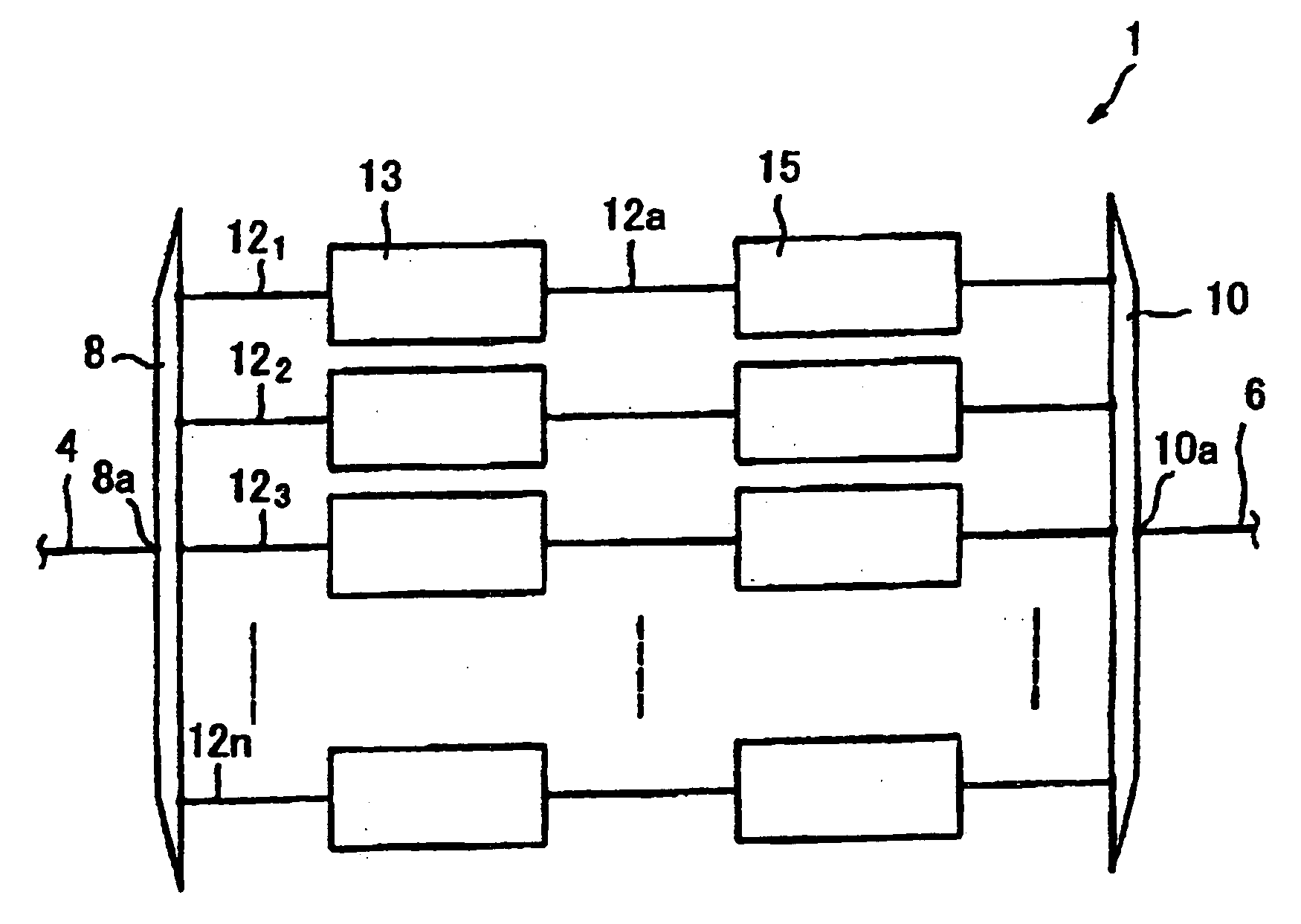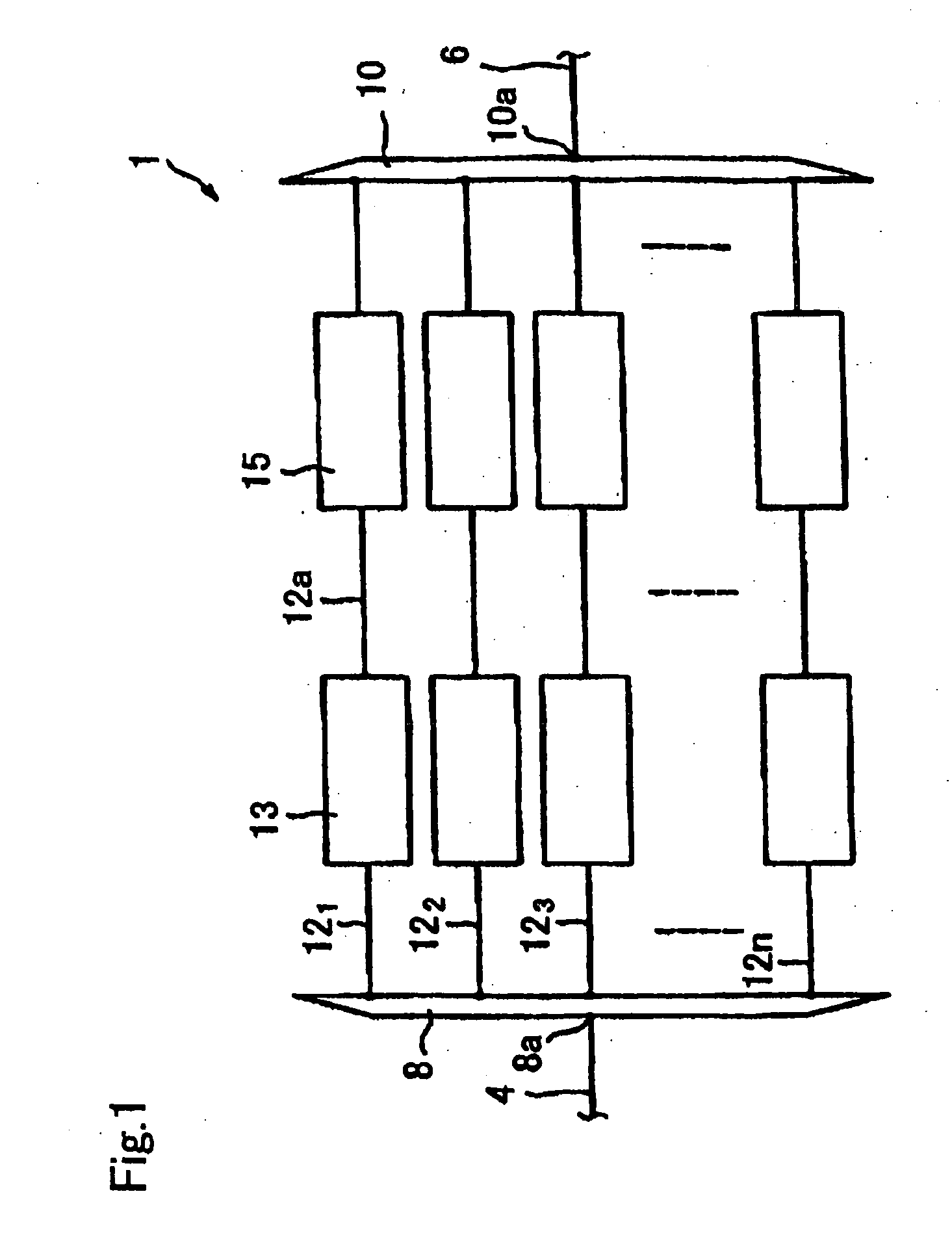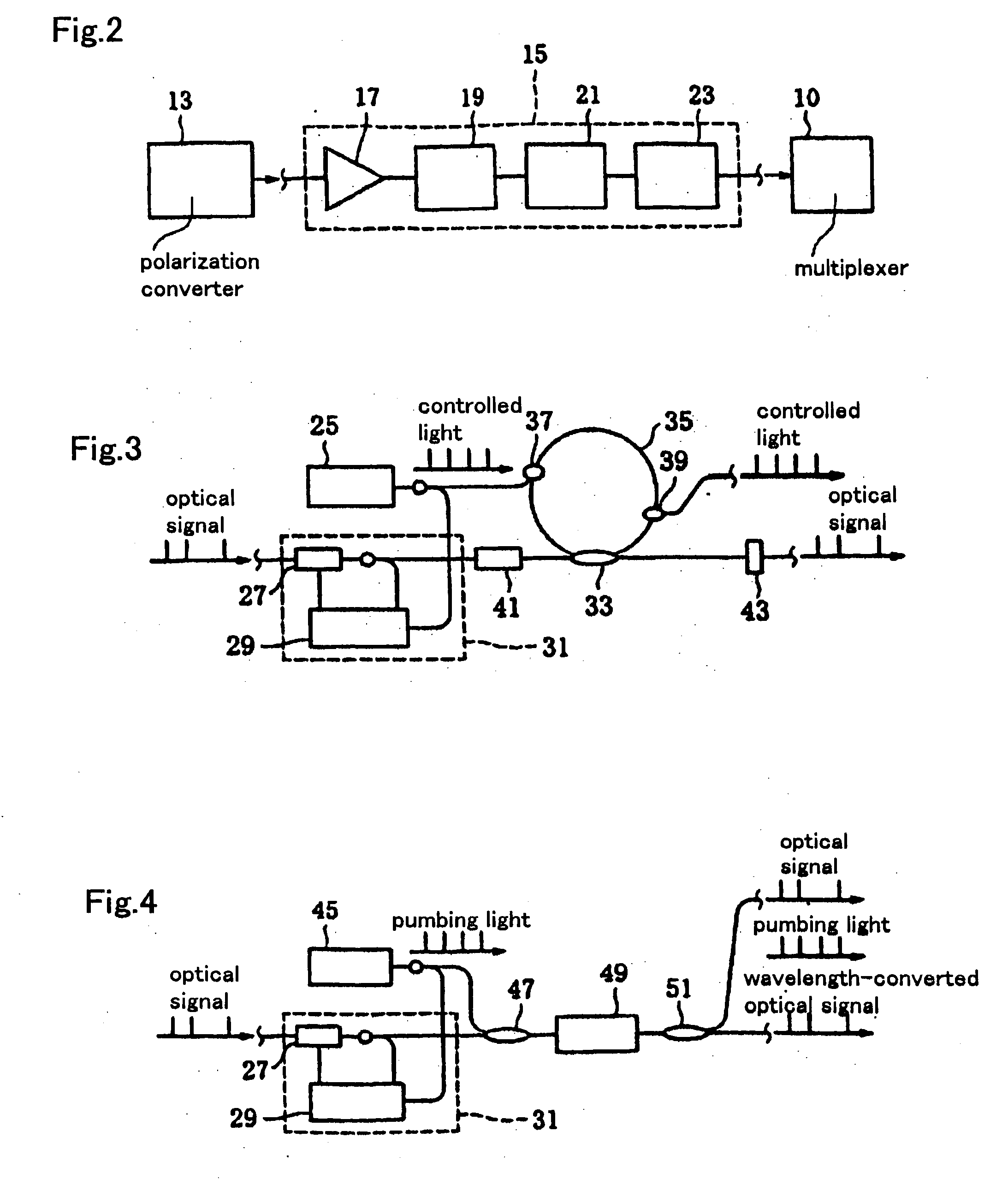Wavelength division multiplex optical regeneration system and wavelength division multiplex optical regeneration method
a regeneration system and wavelength division technology, applied in multiplex communication, instruments, optical elements, etc., can solve the problems of large power consumption in the optical signal regenerating system, deterioration of the waveform of the optical signal, timing and intensity,
- Summary
- Abstract
- Description
- Claims
- Application Information
AI Technical Summary
Benefits of technology
Problems solved by technology
Method used
Image
Examples
first embodiment
[0214]FIG. 1 shows first embodiment of the wavelength division multiplexing optical regeneration system 1 in accordance with the present invention (hereinafter called “regenerating system 1”).
[0215] The regenerating system 1 is used in the configuration installed in the wavelength division multiplexing optical communication system, for example it is inserted between the optical fiber 4 and the optical fiber 6.
[0216] The regenerating system 1 recovers and regenerates a degenerated signal included in a wavelength division multiplexing light, where the degeneration is caused when a wavelength division multiplexing light transmits in the path in the wavelength division multiplexing optical communication system, to the conditions before transmission such as conditions just after emitted from the signal generator. The degeneration means that at least one selected from a group consisting of a level of intensity, a phase, a frequency or a polarization condition or combination thereof, chan...
second embodiment
[0290]FIG. 13 shows the wavelength division multiplexing optical regeneration system 103 (hereinafter, called a regenerating system 103) in accordance with the present invention.
[0291] The regenerating system 103 is the identical configuration to the regenerating system 1 except that: an optical amplifier 105 is inserted in the optical paths 121, 122, 123, . . . 12n, extending from the demultiplexer 8 to the polarizing converter 13; and a variable dispersion compensator 107 is inserted in the polarization maintaining waveguide 12a, 12b, 12c . . . 12n extending from the polarizing converter 13 to the optical signal regenerating system 1 (refer to FIG. 1).
[0292] The optical amplifier 105 is placed between the demultiplexer 8 and the polarizing converter 13 and receives the optical signals λ1, λ2, λ3, λn transmitted in the optical paths 121, 122, 123, . . . 12n from the demultiplexer 8. The optical amplifier 105 amplifies the optical signals λ1, λ2, λ3, . . . λn to be at predetermined...
third embodiment
[0298]FIG. 14 is a schematic view of the wavelength division multiplexing optical regeneration system 109 (hereinafter, called a regenerating system 109) in accordance with the present invention.
[0299] The regenerating system 109 is the identical configuration to the regenerating system 103 shown in FIG. 13 except that the polarization mode dispersion compensator 110 is inserted in the polarization maintaining waveguide 12a, 12b, 12c . . . 12n extending from the variable dispersion compensator 107 to the regenerating system 15.
[0300] This polarization mode dispersion compensator 110 is a device to compensate the polarization mode dispersion which is a phenomenon that the birefringency existing randomly and locally in the transmitting path makes the difference in the transition speed among polarization mode to make a distortion in the time waveform of the optical signal.
[0301] Consequently, by this regenerating system 109, a distortion of the waveform by the polarization mode dispe...
PUM
 Login to View More
Login to View More Abstract
Description
Claims
Application Information
 Login to View More
Login to View More - R&D
- Intellectual Property
- Life Sciences
- Materials
- Tech Scout
- Unparalleled Data Quality
- Higher Quality Content
- 60% Fewer Hallucinations
Browse by: Latest US Patents, China's latest patents, Technical Efficacy Thesaurus, Application Domain, Technology Topic, Popular Technical Reports.
© 2025 PatSnap. All rights reserved.Legal|Privacy policy|Modern Slavery Act Transparency Statement|Sitemap|About US| Contact US: help@patsnap.com



